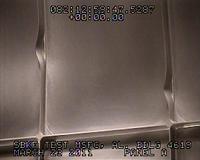 |
Bethesda MD (SPX) Mar 29, 2011 Almost a year after Launchspace contributing editors suggested an exploration vehicle that would take crews from low Earth orbit to many solar system destinations such as asteroids and lunar circumnavigation, NASA has come up with NAUTILUS-X, which stands for Non-Atmospheric Universal Transport Intended for Lengthy US space eXploration. The suggested NASA version is a tubular-looking spacecraft that could serve as a reusable vehicle, holding a crew of six and enough supplies for a two-year expedition. This vehicle would be built in orbit and, if funded, could be ready for space missions by 2020. Launchspace originally suggested that the ISS might be a good base of operations for such a transporter. However, NASA suggests it would be assembled from expandable structures, such as Bigelow's inflatable habitats. Part of the vehicle would contain a ring centrifuge to provide partial gravity. A radiation-mitigation system would be needed to project the crew. This might be done with tanks of water or liquid hydrogen slush. Since Nautilus is intended to be a multi-mission exploration vehicle, it could incorporate mission-specific systems such as propulsion for high delta-V missions, or extra life support for longer coasting periods. As originally suggested by Launchspace, this approach would relieve the need to carry heavy atmospheric ascent and entry systems and structures. However, we still need to ferry the crews from Earth surface to low orbit. At the moment, the US does not have such a vehicle beyond mid-2011, when the Shuttle will be retired. Hopefully, a replacement option will soon arrive. NASA estimates the cost to be about $3.7 billion and construction time to be at least five years. Launchspace thinks this could be an exciting international program to which many nations would be happy to contribute. Such a partnership should reduce NASA's cost considerably, and offer several Earth-to-orbit crew options. Let's see how far the idea gets.
Share This Article With Planet Earth
Related Links Launchspace Rocket Science News at Space-Travel.Com
 NASA's Successful 'Can Crush' Will Aid Heavy-Lift Rocket Design
NASA's Successful 'Can Crush' Will Aid Heavy-Lift Rocket DesignHuntsville AL (SPX) Mar 24, 2011 On March 23, NASA put the squeeze on a large rocket test section. Results from this structural strength test at NASA's Marshall Space Flight Center in Huntsville, Ala., will help future heavy-lift launch vehicles weigh less and reduce development costs. This trailblazing project is examining the safety margins needed in the design of future, large launch vehicle structures. Test results wi ... read more |
|
| The content herein, unless otherwise known to be public domain, are Copyright 1995-2010 - SpaceDaily. AFP and UPI Wire Stories are copyright Agence France-Presse and United Press International. ESA Portal Reports are copyright European Space Agency. All NASA sourced material is public domain. Additional copyrights may apply in whole or part to other bona fide parties. Advertising does not imply endorsement,agreement or approval of any opinions, statements or information provided by SpaceDaily on any Web page published or hosted by SpaceDaily. Privacy Statement |